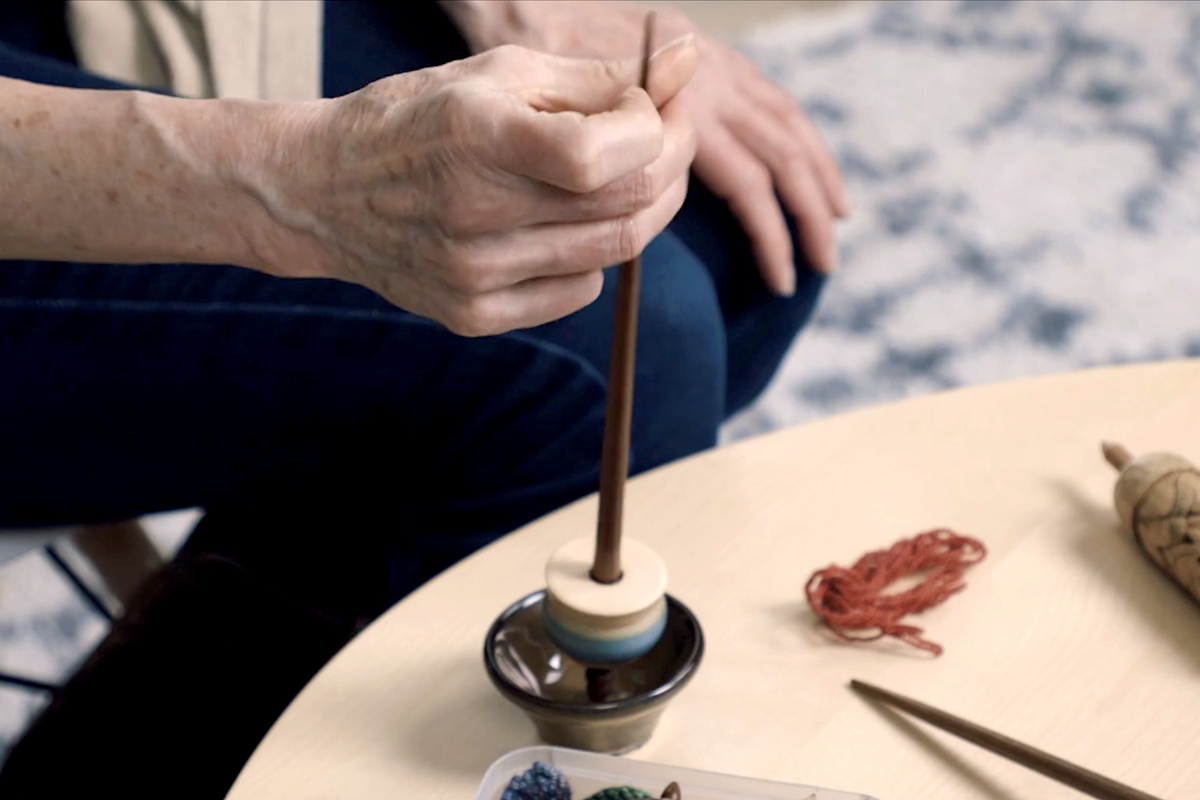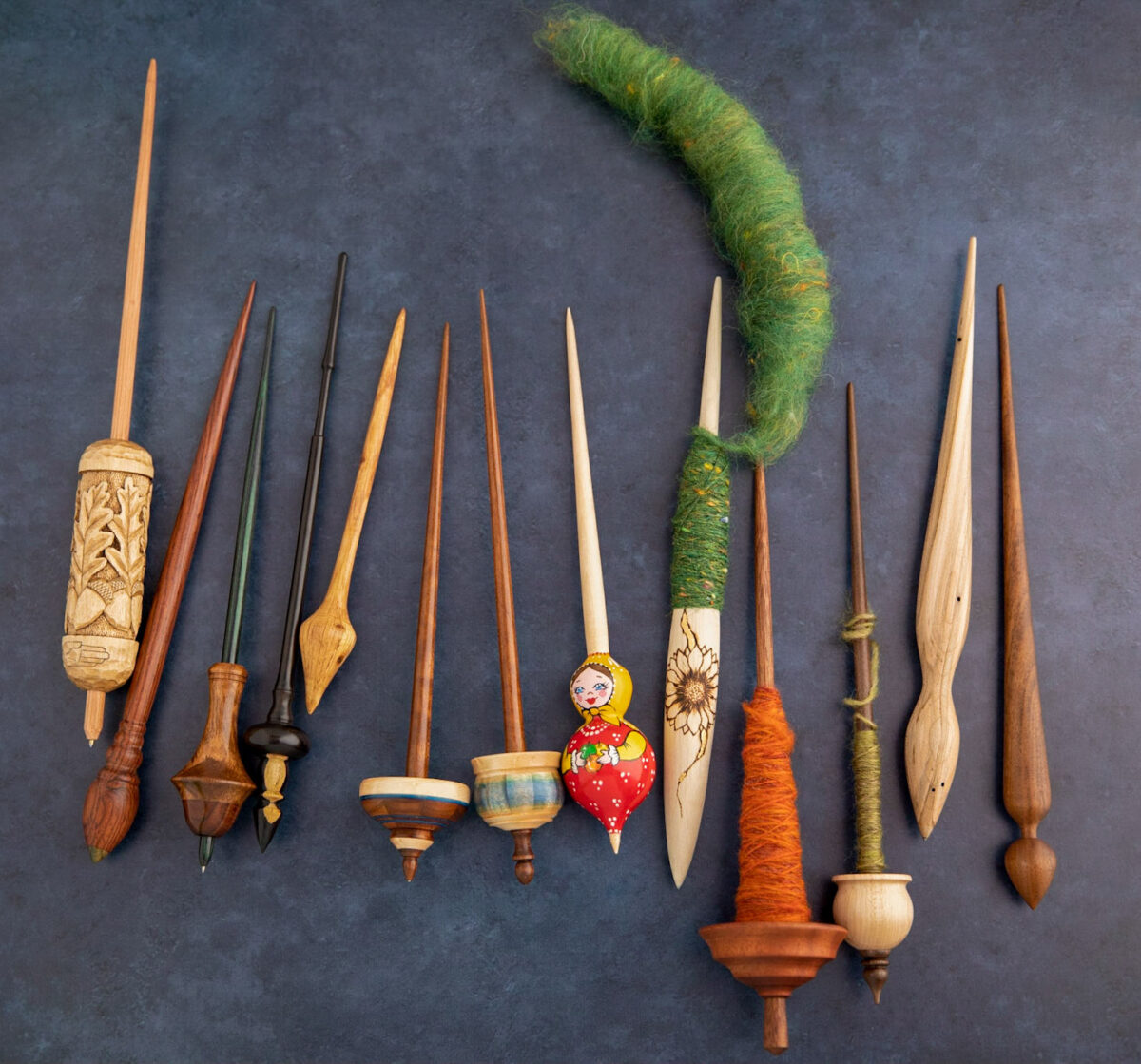Choosing Your First Supported Spindle with Diana Twiss
Diana is inspired by her curiosity and wanting to understand how things work. That deep desire to learn is what drew her into spinning. And now, spindle spinning has completely captured her attention. There’s something truly fascinating about making yarn with nothing more than a stick. Each spindle, regardless of its style, supported and suspended, is used a little differently, yet all of them can produce beautiful yarn. That versatility still amazes her.
One of Diana’s favourite parts of spindle spinning is how accessible it is. Unlike wheel spinning, which requires her to be at home or in her studio, spindles are portable. They let her spin at the start and end of her day and even during Zoom calls. Wherever she goes, her spindles go too.
In this post, she shares a shortlist of what to look for when purchasing your first (or next) supported spindle, along with a short video where she walks through some of her personal favourites.
What Should I Buy?
A question she hears often. When Diana first started, she wasn’t sure either. Each supported spindle style has its own advantages and drawbacks, and it took time and practice to learn the differences. She began with Canadian-made spindles, then explored North American makers. Now, her collection includes spindles from around the world, each offering its own nuance.
Over time, Diana has learned that certain spindle features make a big difference. For example:
- Shaft thickness matters. If it’s too thin or thick, it can be hard to handle or flick.
- Length is also important. A spindle that’s too long can also be hard to manage. Too short, and there’s not enough space to build a proper cop.
- Weight changes everything. Heavier spindles tend to spin longer, but once you’ve added 10 to 20 grams of fibre, they can feel too heavy to use comfortably.
Diana often recommends Tibetan-style spindles for beginners. They offer a more intuitive spot for building the cop, which helps the spindle spin properly. Try to find a spindle in the 20 to 30-gram range, about 10 to 10.5 inches long, which can be a great place to start.

Other Considerations
Some Tibetan spindle tips are wooden, while others are metal. Diana doesn’t have a strong preference but notes that metal tips tend to spin faster. Still, speed isn’t always the goal; it’s just as important to have control and be able to slow it down when needed.
Most importantly, how you build the cop affects how well the spindle spins. As you work, the yarn becomes part of the tool itself. Building cops takes practice, and you will learn what works best for each spindle.
Final Thoughts
These are just a few of the things Diana considers when choosing a spindle. If you’d like to explore more, she’s written a detailed article on supported and suspended spindle styles, The Taxonomy of Spindles: Spindle Styles & Their Best Uses. She also teaches the popular Next-Level Spindle Spinning course at the School of SweetGeorgia, where she helps spinners deepen their understanding and improve their technique with all styles of spindles.
Whether you’re new to spindles or simply curious like Diana, we would love to take this spinning journey with you!

More About Diana Twiss
- Diana’s Instagram
- Diana’s Website: 100 Mile Wear
- Explore Diana’s courses at the School of SweetGeorgia
- Browse Diana’s articles to discover new techniques, refine your skills, and spark creativity.
Need More Help?
Do you have questions about choosing your first supported spindle? If you’re an All-Access School of SweetGeorgia member, join us in our Community Forums! One of the great perks of being an All-Access member is the opportunity to ask Diana Twiss questions about their articles and courses and connect with fellow members.
Not yet a member of the School? We invite you to come and see what it is all about! Use the code: EXPLORETHESCHOOL to save 15% on an All-Access monthly membership!
You’re also welcome to join us on the SweetGeorgia Yarns Discord server. Our community has discussion threads on knitting, spinning, weaving, crocheting, dyeing, and much more. Feel free to start a conversation, get inspiration from fellow SweetGeorgia Yarns members and ask any questions you may have.
Together, we share, learn, and grow as a community. We would be happy to have you join us!
Original publication: July 12th, 2022; Refreshed: May 15th, 2025
Interested in more information on how to get started spinning? We’ve compiled helpful information in a downloadable PDF to help you along with the start of your spinning journey!
The post Choosing Your First Supported Spindle with Diana Twiss appeared first on SweetGeorgia Yarns.
Comments
Post a Comment